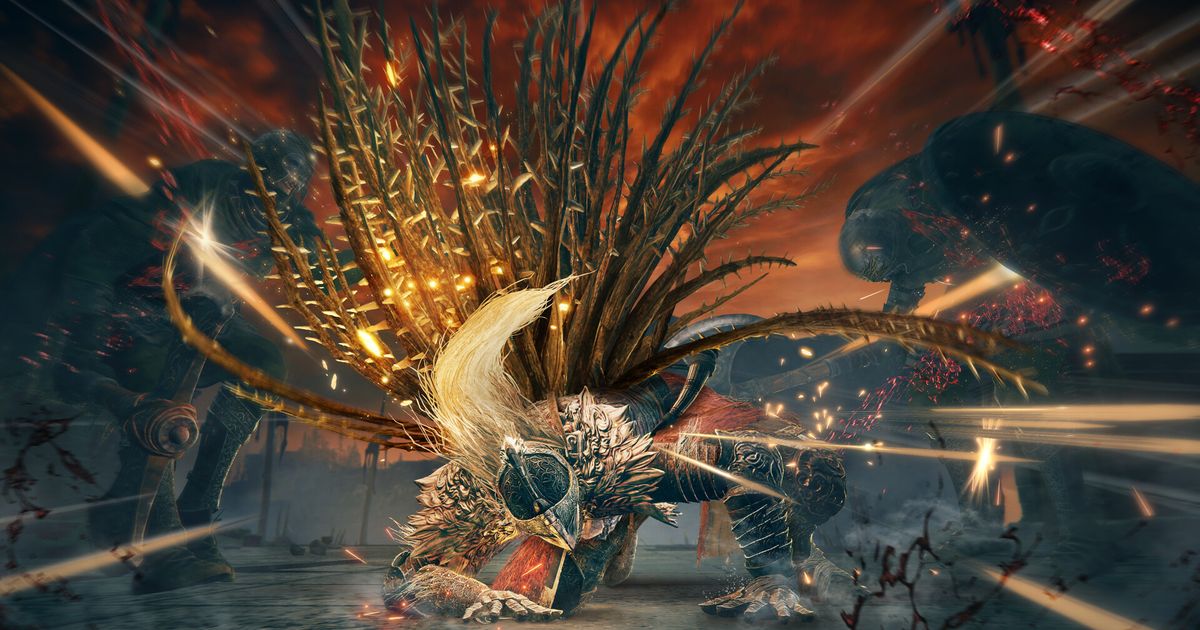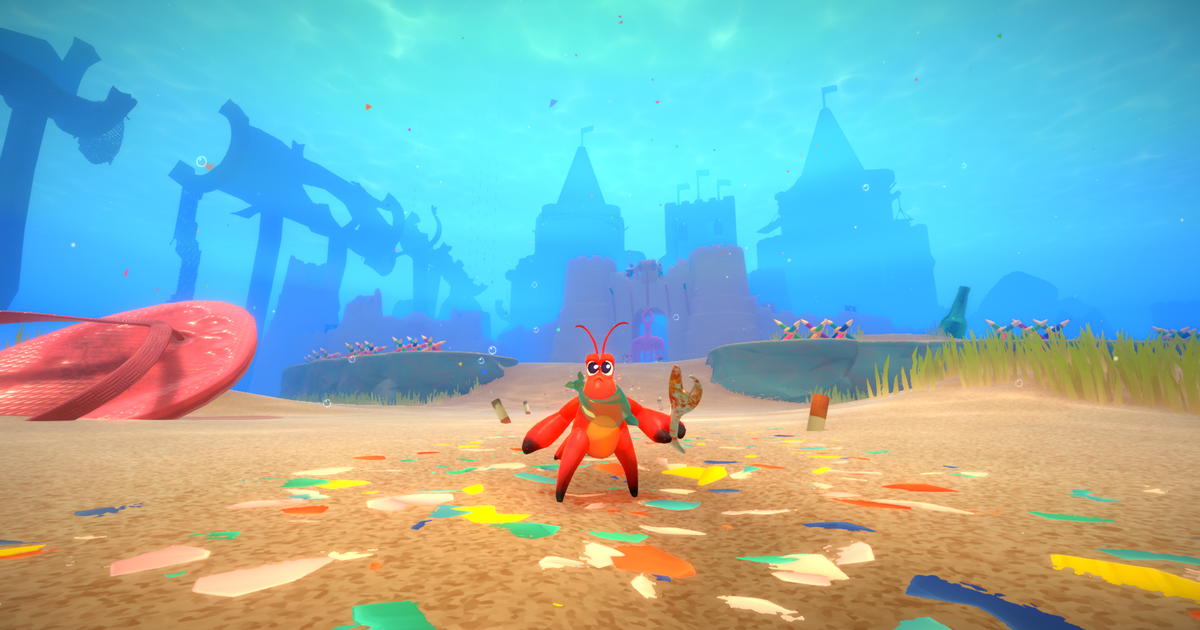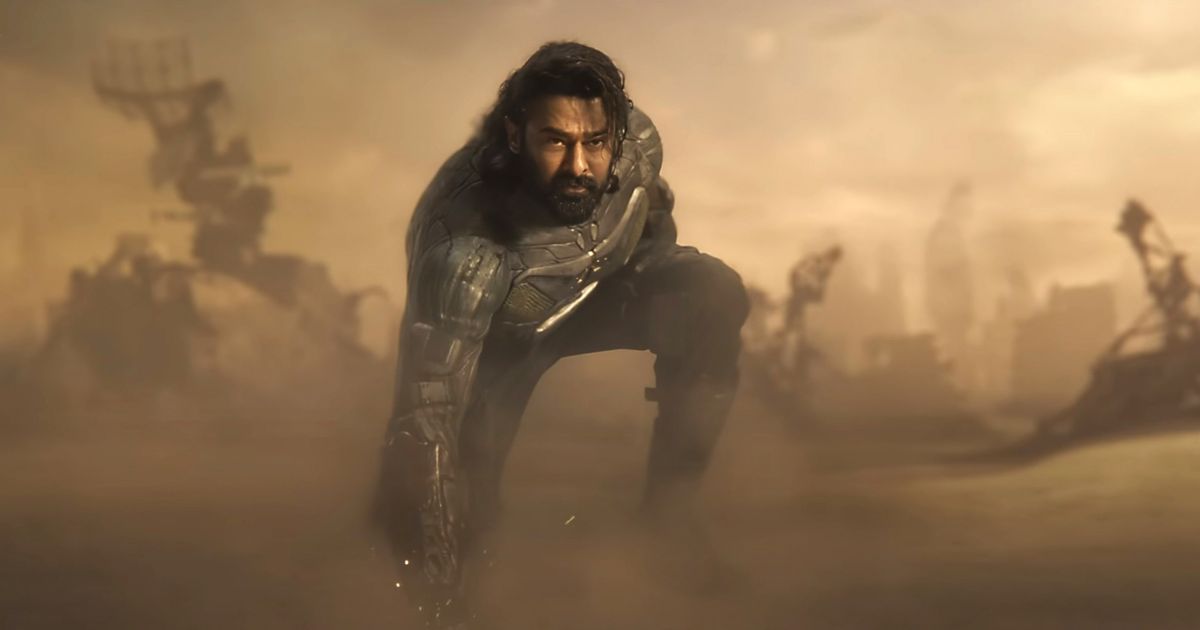Many of FromSoftware’s bleak and regal action role-playing games are notorious for their challenging combat, but these games’ obscure stories can be equally intimidating. The Japanese studio’s latest release, the 2022 open-world epic Elden Ring, is no exception. Ruined castles and fire-breathers, each with their own story waiting to be uncovered, jut out from Elden Ring’s lolling, stretching landscape. Many of its destroyed stone buildings contain opportunities to either talk to fallen gods or be bled out by their swords; A Song of Ice and Fire writer George R.R. Martin helped collaborate on the game’s mythology, so it’s complex and has a tenuous relationship with incest. Because of all this dense, grim fantasy, Elden Ring sometimes takes on the tenor of the Bhagavad Gita. It’s no wonder that the hotly anticipated Shadow of the Erdtree DLC, out June 21, has fans and newcomers cramming for its release like it’s a final.
To help prepare for Shadow of the Erdtree, one popular YouTuber recommended people watch his “concise” lore summary, which is 35 hours long. The first video in the series, which is 13 hours long, has over 1.4 million views. Another video, this one with 2.5 million views, manages to blow FromSoftware’s three-minute gameplay trailer out into a 40-minute dissection of each and every look, snarl, or skeleton. While I also tend to be obsessive with FromSoftware games, I do not think most players need to pay that much attention to lore to enjoy and understand the game.
Playing Elden Ring with absolutely no understanding of its lore can actually improve your experience; when you’re free from assumption, Elden Ring is what you make of it. It becomes a pliable clay — you can mold it into your protagonist’s personal narrative or decide to focus only on the technical aspects of battle as a weary warrior. You can devote yourself to pacifist bird-watching in the game’s singed, natural splendor, or try to explore its giant map as quickly as you can. Without backstory, your game experience becomes more irreplaceable. An open heart is a useful complement to an open-world game like this, which encourages you to conquer it in your own time, in your own way.
So let’s break down why you might want to have a more hands-off approach. For your health.
Before we renounce the gospel, we should at least understand it. Elden Ring takes place in the segmented Lands Between while the region is contested. As you storm through it, you’ll uncover vastly different environments, like the grassy hills of starting area Limgrave and the fiery pits of Caelid.
Throughout it all, people will whisper to you about Queen Marika. This character is essentially a phantom to you until the very end of Elden Ring. Before then, all you can do is follow her footsteps. You learn early on that she has shattered the metaphysical Elden Ring, the law of the land, and then went missing. Her demigod children claimed the Ring’s shards as Great Runes, which become power buffs you can acquire after you defeat the demigods in boss battles.
The idea is that Great Runes first made the demigods more powerful and then power-hungry. Before you landed in the Lands Between, all these clashing egos led to a disastrous war. In the end, the faceless Greater Will — an ethereal godlike thing — seemingly abandoned the wasted life of the Lands Between … except for you. You’re a member of the Tarnished race, which Marika previously exiled from the Lands Between. The Greater Will doesn’t care about that much anymore. Now, it tasks you with killing those big demigod babies, supposedly in order for you to become Elden Lord.
Shadow of the Erdtree meets you halfway into your journey of destruction. The DLC requires you to have defeated Starscourge Radahn, a “shardbearer,” a.k.a. a demigod keeping a Great Rune, made deranged by the corrupting Scarlet Rot disease. You’ll also have to take down the horned Mohg, a shardbearer who has weaponized his cursed Omen blood (it’s cursed, essentially, because he has sad, primordial horns).
In order to evolve past his doom and ascend to godhood, Mohg kidnapped his half-brother Miquella the Kind, who’s been cursed with eternal youth. Or, Mohg thinks he captured Miquella, but, really, Shadow of the Erdtree reveals that the unwilling child left his physical body behind. Miquella moved into the Land of Shadow, a hidden haven for wayward creatures. He seems to be waiting for you there, Tarnished.
Okay, but all of that background doesn’t meaningfully impact Elden Ring’s gameplay. While lore is everywhere you look — in weapon descriptions, cutscenes, non-playable characters’ dialogue, and especially in hidden data, which miners know how to scavenge — it doesn’t change the facts of raw gameplay. When a random enemy approaches you, you have to use your judgment (and the grace of Elden Ring’s flexible open world) to decide if you can manage a few hits or if running away would be better for everyone.
Most random field enemies, which you encounter much more often than an NPC with bloodlust or a boss battle, barely have any backstory. In-game text says that the ubiquitous and erratic Marionette Soldiers, for example, are simply “ill-disciplined and attack without warning.” You would have quickly figured that out by just stepping near them and witnessing their many arms shoot 30 arrows in retaliation.
And even Elden Ring’s comically complex side quests, which are inherently connected to the game’s story, don’t require lore knowledge to complete them. Marrying doll-faced Ranni the Witch takes about 15 steps, but each of them are either obscure (speak to a miniature doll version of her while underground) or given to you as explicit instructions (“I bid thee travel the path of the Lord,” Ranni eventually says). In these situations, memorizing Elden Ring’s lore and making inferences might help you understand why something is happening, but it will never tell you what to do next. Like, you’d think that lore would help you figure out what Marika’s ex-husband Godfrey is weak to, but he’s actually most susceptible to plain old physical damage. Only experimenting can truly be illuminative.
It might seem simple, but, ultimately, Elden Ring rewards you for playing it. Your key to any difficult fight, convoluted quest, or new location is curiosity; pick up every item, interact with every character, try to pull every door open, and so on. At this point, most of Shadow of the Erdtree’s content is conjecture. YouTubers making 36-hour videos and quaking newbies who have only ever played Zoo Tycoon are both starting the DLC in the dark.
Whether you’re a new or returning player, you should at least make sure that you’ve filled out Shadow’s primary requirements: Defeat Radahn and defeat Mohg. Touching Miquella’s withered arm, which hangs limp and purple from his abandoned cocoon in Mohg’s palace, transports you to the Land of Shadow. But before you shake hands with the dead, preview reviewers say that Shadow was tough even with the 150-level character FromSoftware provided them with. Make sure that your character is leveled around this point to stand a fighting chance. Then, be open to all of Elden Ring’s possibilities.















